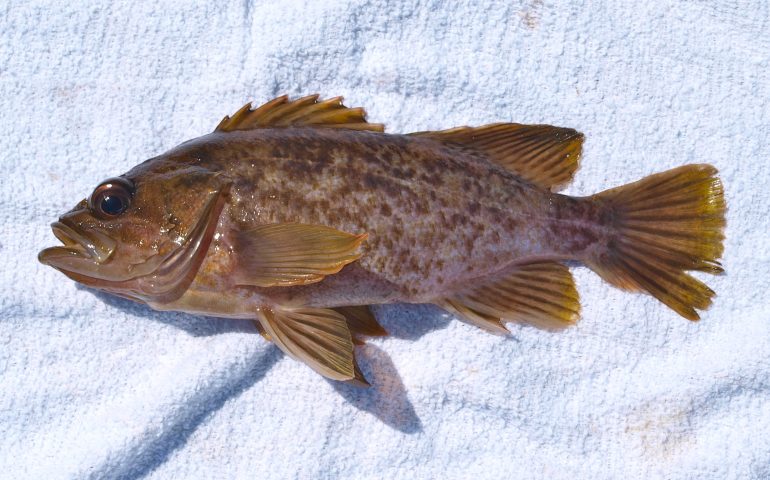Scorpionfishes and Rockfishes: Family Scorpaenidae
Species: Sebastes atrovirens (Jordan & Gilbert, 1880); from the Greek word sebastes (magnificent), and the Latin word atrovirens (black and green).
Alternate Names: Confused with gopher rockfish, grass rockfish, and brown rockfish. Commonly called sugar bass, sometimes called dumb bass or grass bass. Called garupa or green rockfish in the Monterey Bay fishery of the 1880s. A favorite but still slightly weird name, one probably invented by some Internet addicted angler, is oogly googly. Called rocote de sargaso or rocote sargacero in Mexico.
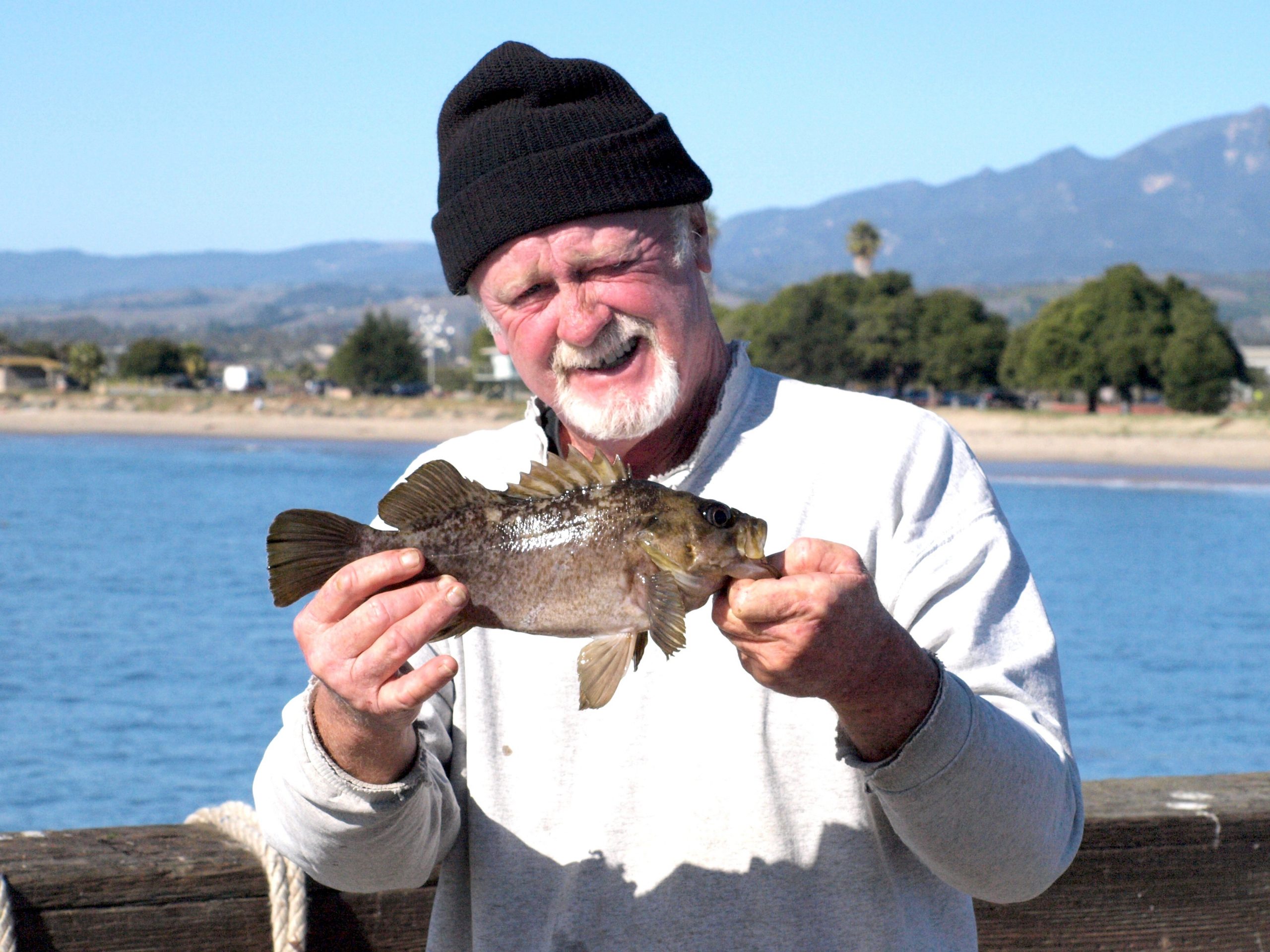
Kelp Rockfish caught at the Goleta Pier by Boyd Grant
Identification: Typical bass-like shape. Their coloring is olive-brown to gray-brown with brown mottling; whitish or pinkish white below. Just to confuse anglers, a few kelpies also show up with reddish coloring (don’t know why). Although often mistaken for grass rockfish, they are easily differentiated during cleaning—the kelp rockfish has long and slender gill rakers on its first gill arch while the grass rockfish has very short and blunt gill rakers. Although not really a stuck up fish, they do have a definitive up-turned profile.
Size: To 16 3/4 inches; most caught from piers are less than 12 inches long. The IGFA World Record fish weighed 2 Lbs 0 oz and was taken at Pacific Grove, CA in 2013.
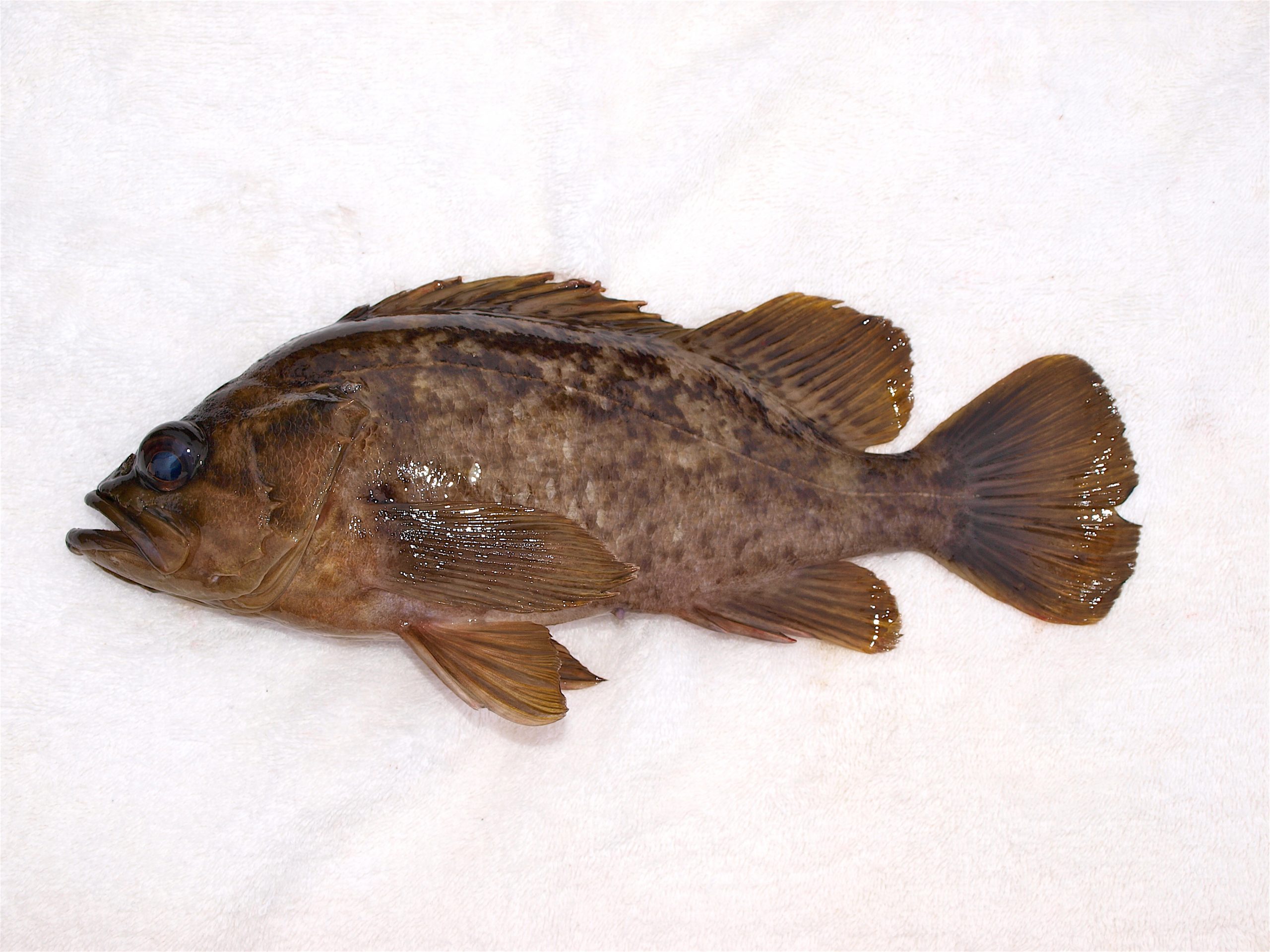
Kelp Rockfish caught at the South T-Pier in Morro Bay
Range: From Bahia San Carlos and San Benito Island, central Baja Californa (some sources say Punta San Pablo), to Albion, Mendocino County. Most commonly found from central California south.
Habitat: Commonly found in kelp forests, ranging from the canopy down to the bottom where they feed on a variety of prey including small fish, crustaceans and cephalopods. During the day they will often rest in the kelp, drifting motionless within the blades of kelp (including hanging upside down). At night they come to life seeking out whatever food is near their home. Younger fish are often in intertidal areas although adults can range down to a 190-foot depth (but most common from 20-80). Kelpies are one of the most common rockfish in shallow-water rocky areas. They are also one more resident species that rarely moves more than ten feet away fom its home in an entire year. Although sharing territory with other shallow-water rockfish sich as blue, gopher, black-and-yellow, and olive rockfishes, they are apparently kept out of the bottom areas by the more aggressive (and territorial) gopher and black-and-yellow rockfishes.
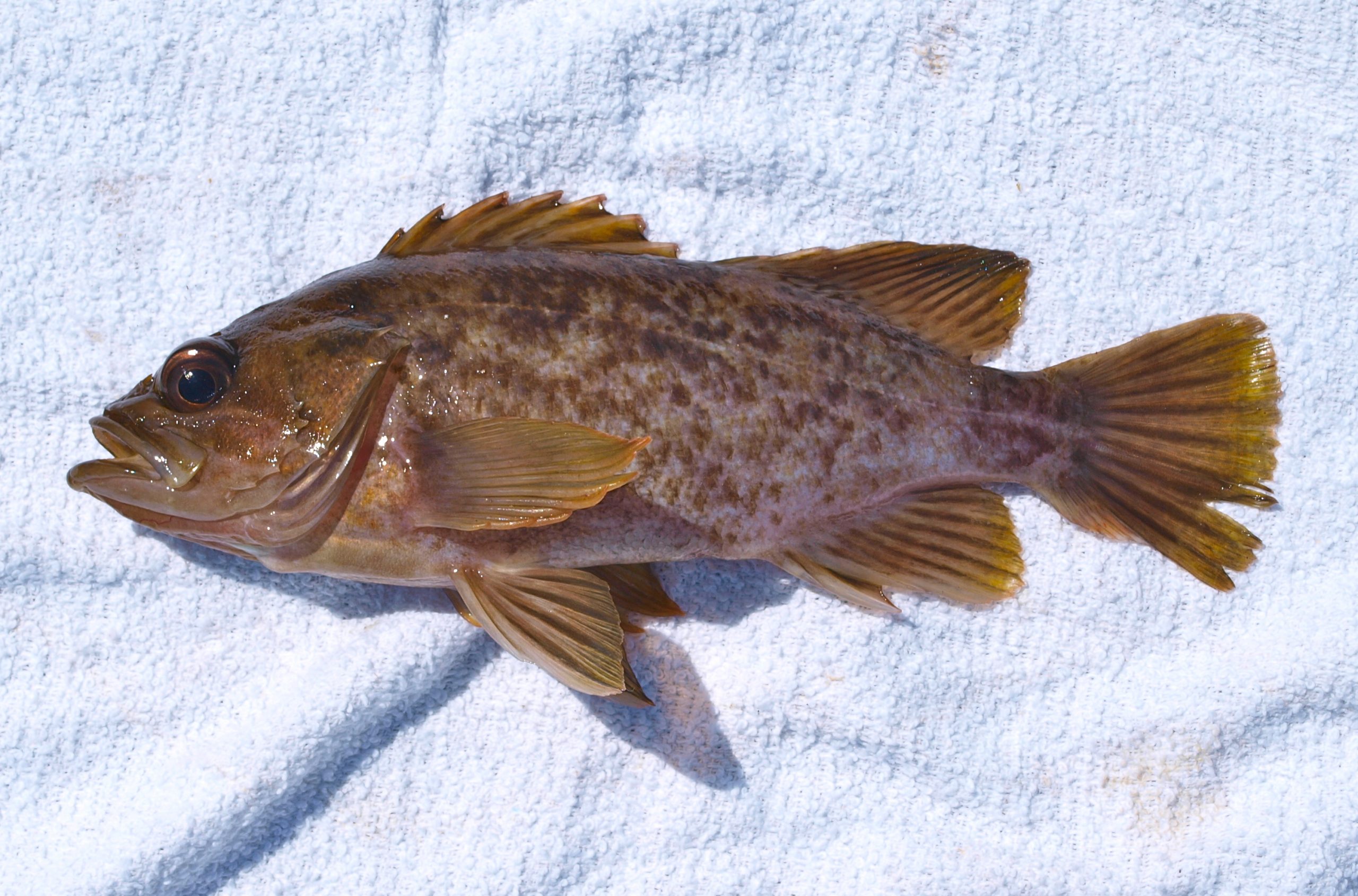
Kelp Rockfish caught at the Cabrillo Mole in Avalon, Catalina Island
Piers: Kelp rockfish are primarily found at piers that have a good summertime growth of kelp around the pier. Best bets: Cabrillo Mole (Avalon), Paradise Cove Pier, Stearns Wharf, Goleta Pier (along the pipe-reef), Gaviota Pier, Port San Luis Pier, Cayucos Pier, San Simeon Pier, Monterey Coast Guard Pier, Monterey Wharf No. 2, and Santa Cruz Wharf. Juvenile fish are common at the Morro Bay T-Piers, Pillar Point Harbor Pier and the San Francisco Muni Pier.
Shoreline: A common catch by rocky shore anglers in southern and central California.
Boats: Taken by boaters fishing relatively shallow waters and around kelp beds in southern and central California.
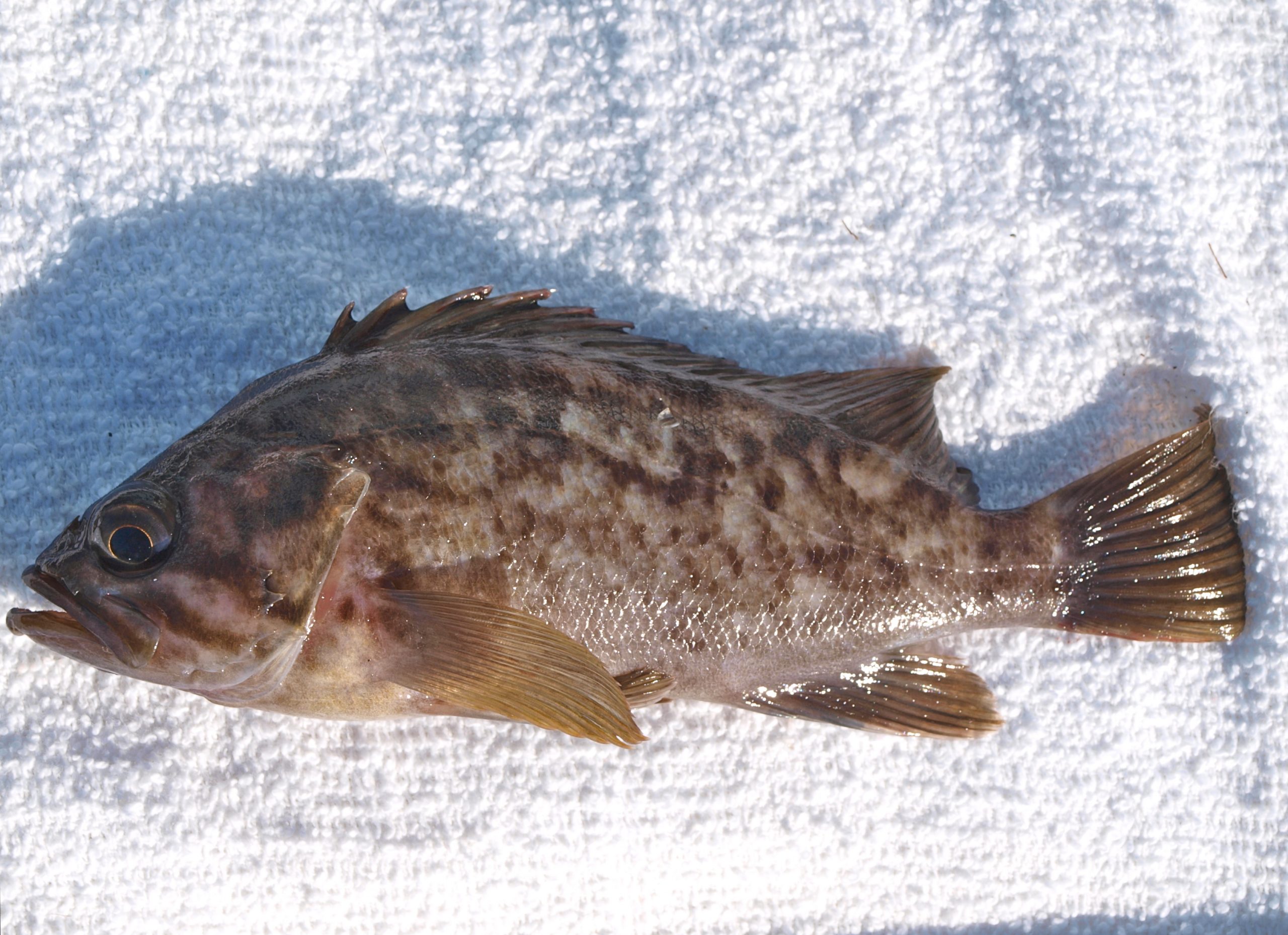
Kelp Rockfish caught at the Cabrillo Mole at Avalon, Catalina Island
Bait and Tackle: Use a high/low leader, number 6 or 4 hooks, and pile worms, small pieces of shrimp, or small strips of squid.
Food Value: An excellent eating, mild-flavored fish that is best fried although often cooked whole. Italian fishermen of the 19th century considered this to be one of the best tasting of all the rockfish.
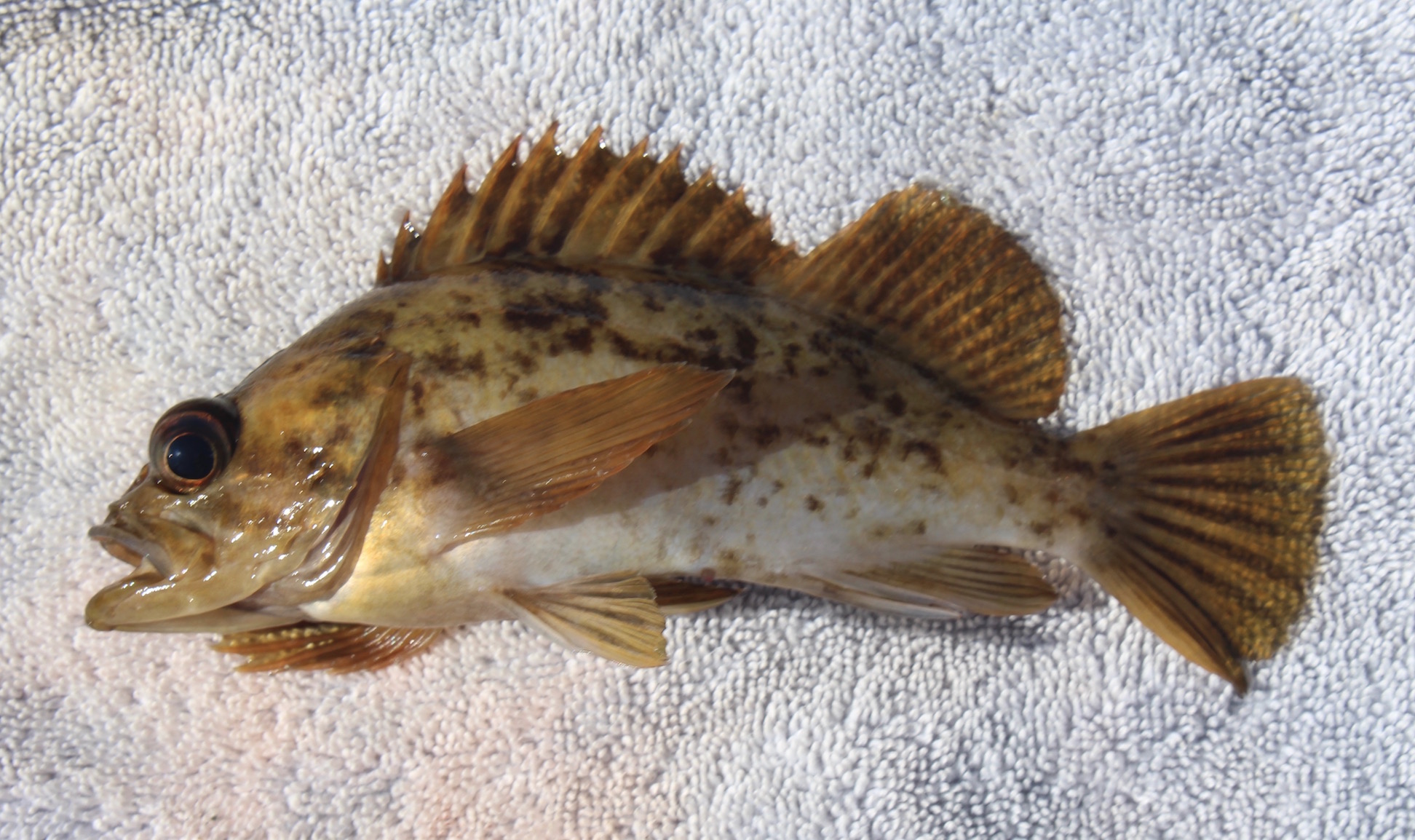
Kelp Rockfish from the Monterey Coast Guard Pier
Comments: Kelp rockfish are reported to live 25 years of age although few are older than 20. Most females are first mature (and reproductive) at about 6 inches and 3 years of age, most are mature by 7 inches and 3.5 years, all are mature by 9 inches and 6 years of age (although one study found initial maturity and reproduction not starting until 8.7 inches and 5 years of age).
